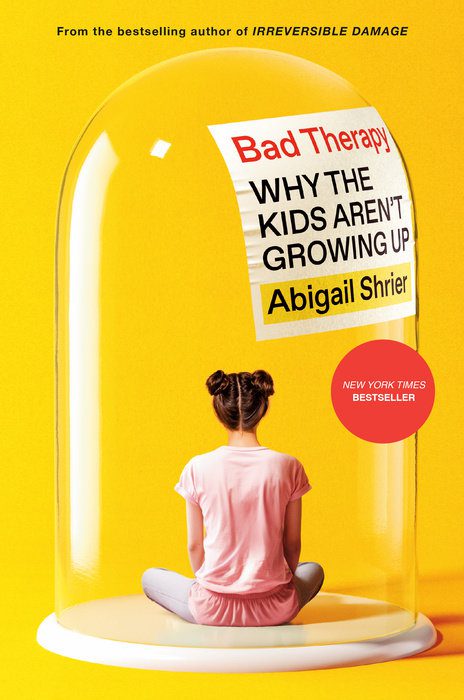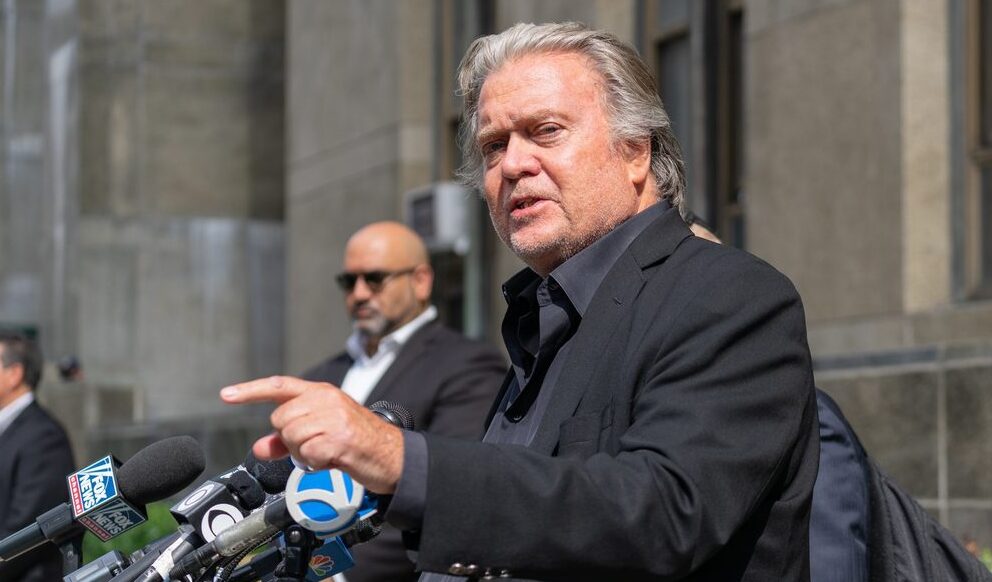Here is a paradox: a generation whose members get more psychological therapy than any generation before them is more stressed, more anxious, and more depressed than any age group since records began. How can this be? Abigail Shrier, an author and Wall Street Journal columnist, has a suggestion: perhaps there is no paradox. Perhaps it is all this therapy that is the problem.
Such a claim will ruffle a few feathers, not least among the therapists, parents, and teachers who take it as read that therapy can only help a child’s emotional growth. But Shrier is used to swimming against the tide. In her 2020 book, Irreversible Damage, she proposed that the rise in trans-identifying teenagers was due not to the march of progress but to social contagion. She was swiftly and roundly attacked as a result. And the fallout is ongoing: last month, the Japanese publisher Kadokowa scrapped its plans to publish the book. Some libraries refuse to stock it.
So Shrier has thick skin, which is just as well. In Bad Therapy, she accuses a “mental health establishment” of selling a generation “on the idea that vast numbers of them are sick.” Therapy, far from making children healthier, often causes the problems it exists to solve, she writes—and it does harm in countless other ways, too. She was inspired to write the book after a visit to the doctor with her twelve-year-old son, who was presented with a questionnaire. Shrier, having refused to leave the room as the nurse requested, asked to see the questions. It is worth recording them here in in full:
In the past few weeks, have you wished you were dead?
In the past few weeks, have you felt that you or your family would be better off if you were dead?
In the past few weeks, have you been having thoughts about killing yourself?
Have you ever tried to kill yourself? If yes, how? When?
Are you having thoughts of killing yourself right now? If yes, please describe.
Well, gosh. No wonder Shrier was slightly alarmed. “What if I had been just a little more trusting?” she wonders, “Children often try to please adults. Would the staff have prevented me from taking my son home?”
This was not an anomaly, insists Shrier. The U.S. National Institute of Mental Health devised the questionnaire. And school behaviour surveys routinely ask children about cutting, burning, wanting to die, and other similarly cheerful topics. Questions like these, submits Shrier, can introduce problems where they did not before exist, just as D.A.R.E., an anti-drugs campaign run in the U.S. in the early ’90s, may in fact have increased drinking and drug use among teenagers, according to a series of follow-up studies.
She invites us to consider the data. Nearly 40% of the rising generation has received treatment from a mental health professional. About the same proportion (42%) has a mental health diagnosis. One in six U.S. children between the ages of two and eight has been told he has a mental, behavioural, or developmental disorder. Nearly 10% of children have been diagnosed with anxiety disorder. More than 10% have an ADHD diagnosis. It is not just Shrier who thinks something may have gone awry. In a peer-reviewed paper, “More Treatment but No Less Depression: The Treatment-Prevalence Paradox,” researchers discussed how treatment for major depression had become much more widely available since the 1980s, but in not a single Western country has this decreased cases of major depression (in fact, in many countries, it has gone up).
Of course, the perceived meddling of well-meaning adults in the lives of healthy children cannot possibly be the sole cause of their distress. Conservative researchers blame fatherlessness, the decline of marriage, and falling religiosity. Their counterparts on the Left blame school shootings, systemic racism, social inequality, and Trumpism. Psychologists, like Karla Vermeulen of the State University of New York at New Paltz, blame a combination of factors: “No past American generation has faced the cumulative load of multiple simultaneous stressors today’s emerging adults grew up with.” She may well be right, but it is hard not to think of Larkin’s “long uneven lines” of British boys queuing to sign up to fight in the trenches, and wonder how this can be the case.
COVID-19 gets a mention. But Vermeulen puts one ‘stressor’ above the rest: climate change. For her (as well as Nature, The Lancet and NPR), depression, anxiety, etc. are ‘rational’ in what Antonio Guterres has called, a bit theatrically, if not perhaps wrongly, the “age of global boiling.” The editor of the Atlantic, Franklin Foer, says anxiety is the “mature response” to climate change. “To protect our children,” he adds, “we must embrace their despair.”
Hm. Shrier isn’t so sure that ‘climate anxiety’ can cause such distress (her inverted commas give it away). She is more concerned about—and here I quote the Irish fire-and-brimstone priest who Christened my friend’s son recently—”the evils of social media,” though that priest might more usefully have mentioned smartphones. Shrier warned about them four years ago. The psychologists Jean Twenge and Jonathan Haidt warned about them eight years ago. All said they narrowed attention spans and made children sleepless, anxious, and depressed. Yet the major psychological bodies were oddly quiet on the subject. Why? “Because any parent can take away a phone, but only a psychologist can diagnose a child or refer a medication,” Shrier writes. “The most important thing they could have done to help improve kids’ mental health was something that didn’t require their expertise.”
It is not just those therapists who are to blame. “The entire society dropped the ball on kids and smartphones,” writes Shrier. And this illuminates what is in fact her central theme: not therapy, not even ‘bad therapy,’ but what she sees as a therapeutic culture which, through indulgence, hurts rather than harms. She laments the fact that parents must coax, cajole, and bribe their children to brush their teeth and go to bed. We can almost hear her sigh as she relates how the Washington Post’s ‘mental health professional’ (her inverted commas, not mine) has said that mispronouncing someone’s name is damaging to his psyche. And she is concerned about the longer-term implications of this therapeutic mindset. She is alarmed to hear of a 16-year-old who cannot find the courage to go into a high-street restaurant and order lunch. She is disturbed to learn that some teenagers keep a cache of screenshots, often for years, to incriminate their friends. “They do not behave like teammates in a great society,” she writes. “They behave like the survivors of the remnants of one, after all order has broken down.”
Shrier is especially damning when she writes about trauma, “the ‘unproven idea’ that difficult childhood experiences govern the “emotional life of an adult.” She gives its biggest champions —its “high priests”—both barrels. For instance, she charges Bessel van der Kolk, author of the wildly popular The Body Keeps the Score, of repackaging discredited “repressed memory” theory—described as “arguably the most serious catastrophe to strike the mental health field since the lobotomy era” by Harvard’s Richard McNally. She cites the science journalist Mark Pendergrast as saying that van der Kolk’s testimony in several repressed memory cases was “crucial to putting innocent people in prison.” And she adds that van der Kolk has never disavowed repressed memory theory: part of his New York Times best-seller is devoted to the ‘science’ of it. Fittingly, his 1994 paper lending support for the theory was called “The Body Keeps the Score.” The problem, for Shrier, is that it doesn’t. The body does not carry ‘trauma.’ Trauma, she writes, just gives us an excuse for our misfortunes and failings.
Inevitably, we can ascribe our trauma to others. Shrier describes how therapy at every age can hurt relationships—between children and parents, between spouses, between us and our communities. Ironically, to blame others for our failings, we must surely ascribe to them a freedom of action that we claim not to have ourselves. But this is a book full of little ironies. Parents get help on parenting from childless therapists—like “having a biologist teach you how to make love,” Shrier writes. We seek connection through social media and end up divided and lonely. We teach empathy and watch teenage cruelty soar—one mother tells Shrier she thinks it “creates unbelievable narcissists.” The central irony, for Shrier, is that loving parents—in their attempts to raise healthy, happy children—make the children miserable instead, with the most permissive parents being most likely to get “cut off.”
Shrier can with good reason be accused of depending too much on anecdote and hearsay, though she might justifiably reply that the data and research to prove her point conclusively do not exist. Indeed, what comes through strongly in her analysis is the sheer murkiness of what she calls the “mental health establishment” and the world of therapy in particular. Even the meaning of the word ‘therapy,’ as defined by the American Psychological Association, is circular: “Any psychological service provided by a trained professional.” But Shrier is at pains nonetheless to make clear that she is not against therapy. She has undergone it herself, and successfully. Moreover, a large number of respected academic psychologists, therapists, and researchers, by and large, agree with her central claim that therapy and therapeutic thinking can do harm.
No one, then, is suggesting a return to the days when shell-shocked soldiers would blow their brains out because they could not talk about their feelings. But she is suggesting that therapeutic thinking has gone too far, and must be restored to its proper place as a means to help deeply unhappy or dysfunctional people to reclaim their lives. It is certainly difficult not to agree with her that there has been at least some ‘mission creep.’ Consider language: as Theodore Dalrymple, the veteran prison psychiatrist (and contributor to this journal), has remarked, it is vanishingly rare to hear someone say he is “sad.” Invariably he is now “depressed.” We might add that ‘worry’ is now ‘anxiety’, or that ‘self-centredness’ is often ‘narcissistic personality disorder.’ I do not think this is a small thing. There is a lot of wisdom in keeping the emotional temperature low.
I do not think that therapy is a bad thing by any means, though of course it can be (and, as someone wryly said to me the other day, a priest is cheaper). What does deserve some thought is whether our present fixation on our feelings and the feelings of children and teenagers, however well-meaning, is doing us much good. In Shrier’s view, it isn’t: bad therapy has slipped out of the therapist’s room and is part of the culture. It seems that we are all on the therapist’s couch now.







